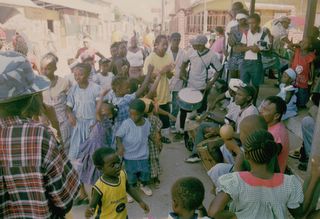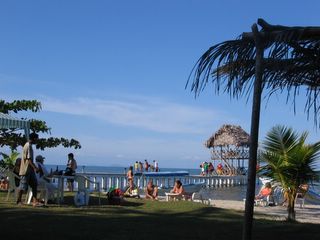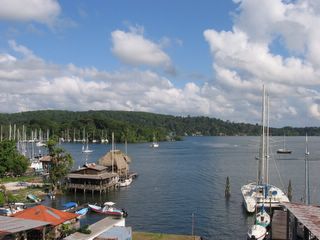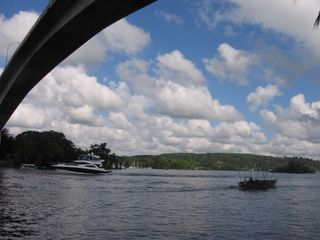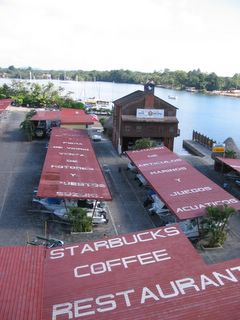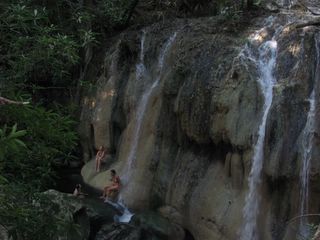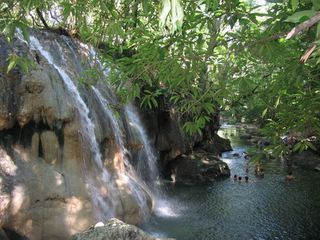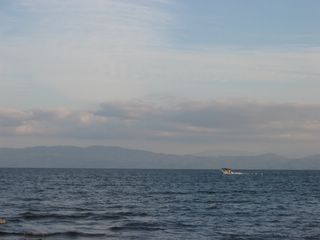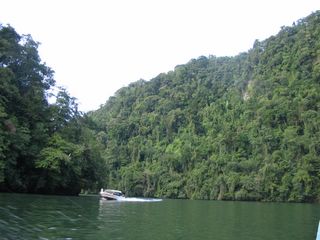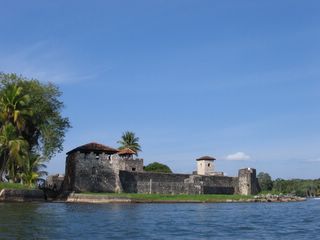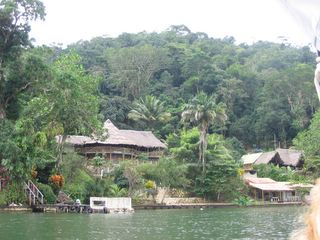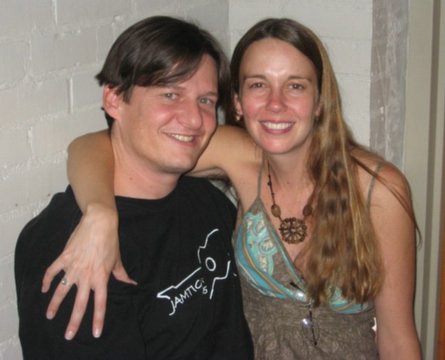
The lakefront at San Marcos, Lake Atitlán
After bouncing around the country for the past 2 weeks, it was so nice to return to one of our favorite spots anywhere, the stunningly beautiful Lake Atitlán. The lake has become our favorite weekend getaway (about once a month these days), but usually we stay in San Pedro. This was our first time in San Marcos.
Like San Pedro, San Marcos has its touristy area down near the lake shore, while the traditional indigenous village is located a little way up the hill from the lake. And also like San Pedro, the touristy area of the village has dirt trails instead of roads, leading through a lush, verdant forest setting with hotels, restaurants and meditation centers set amongst all kinds of flowers, fruit and coffee trees.
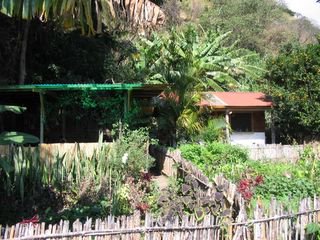
The place we particularly liked was Moonfish Café & Restaurant. Owned by an expat gringo named Shep, the place specializes in fantastic vegetarian food, much of it organic and grown on the property. In the photo, the open-air dining area is on the left, while the kitchen is the building on the right. Part of the organic vegetable garden is shown in front of the kitchen.
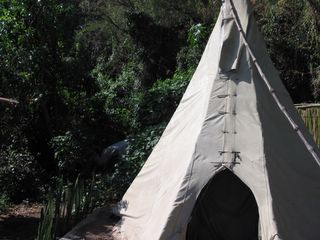
Shep also has a couple of large teepees in the back of the Moonfish restaurant which you can sleep in for the night instead of staying in a hotel. He also provides a small kitchen like you would find at a hostel. We set up our tent next to this teepee. (to the left and a little behind it)
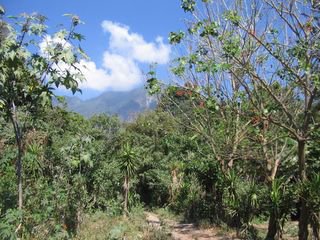
To reach Moonfish, we had to walk 5 minutes from the main road on a series of paths and dirt trails. You could also reach it by boat, since it’s right on the lake.

This beautiful hotel, Aaculaax, was just next door to Moonfish. This is where our friend Jessica stayed.

The view of Lake Atitlán from the little beach in front of Moonfish.

Sunset from San Marcos, looking toward the volcanoes Atitlán (left) and Tolimán.

The main event in town on New Years Eve was a concert by the primal psychedelic Latin rock band, Kan’nal.
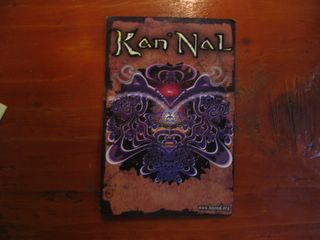
Formed here in San Marcos several years ago by a variety of young travelers from the US and Canada, Kan'Nal has recently broken into the US touring and summer festival circuit. They drew some rave reviews at the famous High Sierra Music Festival in northern California.

The show took place under a large thatched-roof-covered veranda at a beautiful hotel/restaurant called La Paz (Spanish for Peace).

Kan'Nal in action.

Carley and Kina chilling in the back of the audience. Many in the audience had painted faces.

Fire dancers at times accompanied the band, despite the thatched roof overhead. Fire marshalls don't seem to have the same command here in Guatemala that they do in the US.

Bonfire schwirl
HAPPY 2006!!
Back to the main page

